I went through many questions in StackOverflow and able to develop small program to detect squares and rectangles correctly. This is my sample code
public static CvSeq findSquares(final IplImage src, CvMemStorage storage) {
CvSeq squares = new CvContour();
squares = cvCreateSeq(0, sizeof(CvContour.class), sizeof(CvSeq.class), storage);
IplImage pyr = null, timg = null, gray = null, tgray;
timg = cvCloneImage(src);
CvSize sz = cvSize(src.width(), src.height());
tgray = cvCreateImage(sz, src.depth(), 1);
gray = cvCreateImage(sz, src.depth(), 1);
// cvCvtColor(gray, src, 1);
pyr = cvCreateImage(cvSize(sz.width() / 2, sz.height() / 2), src.depth(), src.nChannels());
// down-scale and upscale the image to filter out the noise
// cvPyrDown(timg, pyr, CV_GAUSSIAN_5x5);
// cvPyrUp(pyr, timg, CV_GAUSSIAN_5x5);
// cvSaveImage("ha.jpg",timg);
CvSeq contours = new CvContour();
// request closing of the application when the image window is closed
// show image on window
// find squares in every color plane of the image
for (int c = 0; c < 3; c++) {
IplImage channels[] = { cvCreateImage(sz, 8, 1), cvCreateImage(sz, 8, 1), cvCreateImage(sz, 8, 1) };
channels[c] = cvCreateImage(sz, 8, 1);
if (src.nChannels() > 1) {
cvSplit(timg, channels[0], channels[1], channels[2], null);
} else {
tgray = cvCloneImage(timg);
}
tgray = channels[c];
// // try several threshold levels
for (int l = 0; l < N; l++) {
// hack: use Canny instead of zero threshold level.
// Canny helps to catch squares with gradient shading
if (l == 0) {
// apply Canny. Take the upper threshold from slider
// and set the lower to 0 (which forces edges merging)
cvCanny(tgray, gray, 0, thresh, 5);
// dilate canny output to remove potential
// // holes between edge segments
cvDilate(gray, gray, null, 1);
} else {
// apply threshold if l!=0:
cvThreshold(tgray, gray, (l + 1) * 255 / N, 255,
CV_THRESH_BINARY);
}
// find contours and store them all as a list
cvFindContours(gray, storage, contours, sizeof(CvContour.class), CV_RETR_LIST, CV_CHAIN_APPROX_SIMPLE);
CvSeq approx;
// test each contour
while (contours != null && !contours.isNull()) {
if (contours.elem_size() > 0) {
approx = cvApproxPoly(contours, Loader.sizeof(CvContour.class), storage, CV_POLY_APPROX_DP, cvContourPerimeter(contours) * 0.02, 0);
if (approx.total() == 4 && Math.abs(cvContourArea(approx, CV_WHOLE_SEQ, 0)) > 1000 && cvCheckContourConvexity(approx) != 0) {
double maxCosine = 0;
for (int j = 2; j < 5; j++) {
// find the maximum cosine of the angle between
// joint edges
double cosine = Math.abs(angle(
new CvPoint(cvGetSeqElem(
approx, j % 4)),
new CvPoint(cvGetSeqElem(
approx, j - 2)),
new CvPoint(cvGetSeqElem(
approx, j - 1))));
maxCosine = Math.max(maxCosine, cosine);
}
if (maxCosine < 0.2) {
CvRect x = cvBoundingRect(approx, l);
if ((x.width() * x.height()) < 50000) {
System.out.println("Width : " + x.width()
+ " Height : " + x.height());
cvSeqPush(squares, approx);
}
}
}
}
contours = contours.h_next();
}
contours = new CvContour();
}
}
return squares;
}
I use this image to detect rectangles and squares

I need to identify the following output

and

But when I run the above code, it detects only the following rectangles. But I don't know the reason for that. Please can someone explain the reason for that.
This is the output that I got.

Please be kind enough to explain the problem in above code and give some suggensions to detect this squares and rectangles.